Kayapo Project Conservation and Biodiversity Benefits
“We Kayapó indigenous people want to preserve our forest because we need everything the forest gives us. The forest needs to be protected to preserve our lives. The forest, which we call Bà, Bà Jabatoj, Bà akamat kà tyk, bà prek is our big forest, our dense, closed forest, our tall forest and this forest energizes our people. We want to preserve the forest for our livelihoods. The forest creates the rain we need. Without the forest there will be no more rain, we will catch fire.” Akjaboro Kayapó, Mrybari village
Kayapo territory is the last large block of forest and refuge for biodiversity surviving in the southeastern Amazon. Kayapo livelihood and culture depends on the intact forest and riverine ecosystems they fight to protect. Kayapo territory is large enough to support viable populations of preferred game species such as the white-lipped peccary and tapir that range over large areas and are sensitive to hunting. The size of Kayapo territory means that most is not hunted. Of conservation significance as well, Kayapo lands protect over two hundred kilometers (125 miles) of the Xingu river from degradation by deforestation, pollution and over-fishing. As many as 1,500 fish species, including many endemics, inhabit the Xingu River. Fish are the most important source of protein for local people.
Perhaps most critically important for conservation is that most Amazon tree species require very large landscapes to maintain viable populations. The great majority of Amazon tree species occur at low densities of less than one individual per ha locally; but have high absolute population sizes across landscapes. Furthermore, most depend on co-evolved animal vectors for pollination and seed dispersal across large inter individual distances –small areas do not contain enough individuals or viable animal vector populations for regeneration of many forest tree species over the long-term. The dauntingly intricate web of interdependence among Amazonian species requires large areas to function and persist.
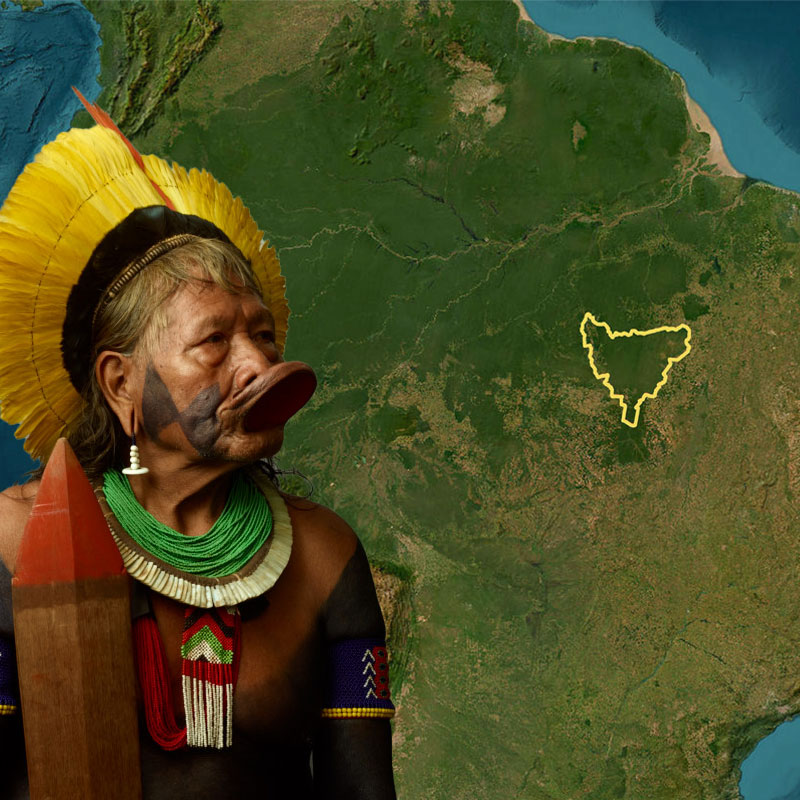
With 90,000km2, Kayapo’s protected territory is comparable to the size of countries like Ireland, South Korea, or the US State of West Virginia. Photo: Martin Schoeller
“The preservation of our forest is important so that we can continue to live in nature. The forest needs the indigenous people and we indigenous people need the forest, the rivers, the fish, our supermarket is the forest where we get our food, our fruits, our fish, our game so that we can feed our families. We indigenous people are fighting for the rights of nature and the rights of us indigenous people, but for that we need support”. Bepunu Kayapó, Mojkarakô village
A few of the high profile endangered or threatened species protected in Kayapo Lands are: giant otter, giant armadillo, utahicki saki monkey, white whiskered spider monkey, hyacinth macaw, harpy eagle, and several high value timber species such as mahogany and ipe.

Blue-throated Macaw
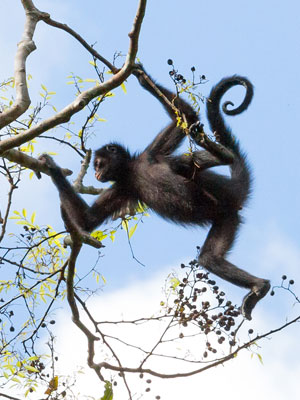
White-cheeked Spider Monkey
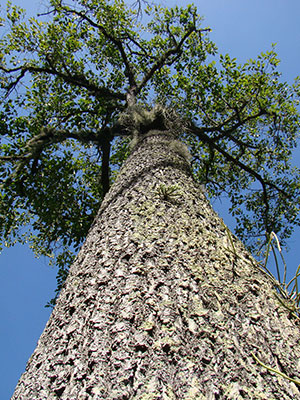
Brazil Nut
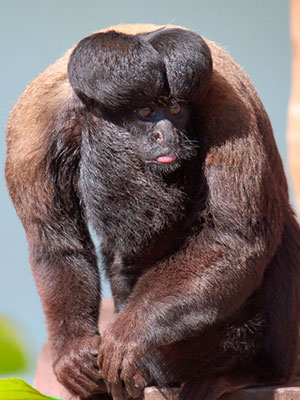
Utahicki Saki Monkey

Jaguar

Giant Otter
“In the past, we spoke the language of the animals and they spoke to us. Nowadays, we talk to them and they tell us what they feel by moving their head and their limbs with small movements. We ask and they tell us if they are suffering, if they are hungry, if they are sick. That is how animals talk to the Kayapó” – Panh Ô, Bau village
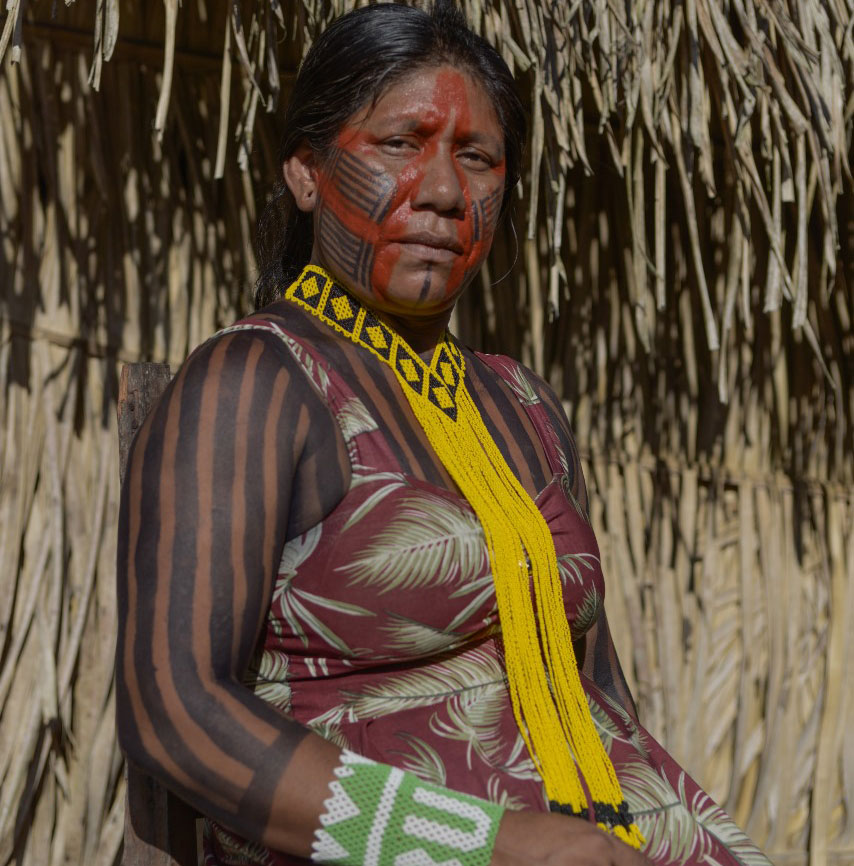
Panh Ô, Photo: Karina Iliescu/Global Witness
Kayapo Culture and Territorial Protection
Historically, the forest and rivers provided the warrior Kayapo with all their needs: food, shelter, medicine, weapons, beliefs, and ornaments for their rich social life. Today, 50 years post contact with outside society, the Kayapo have come to need manufactured goods and technology that they must buy in local frontier towns. Insertion of a monetary economy into Kayapo life changes things dramatically -and yet, Kayapo culture and attachment to the forest remains essential. Kayapo cosmology integrates plants and animals into their daily lives. For example, intricate body painting motifs using the genipap fruit typically represent different fish and animal species. Participants in elaborate community rituals embody different animals including tapirs, monkeys, anteaters, birds, and fish. What all this means is Kayapo culture is inextricably linked to the territory they fight to protect.
“We have been like this since before the arrival of white people, when we lived in the forest. The forest has always been here and we have always been in it. There were no farms here, no white people, nothing like that. It was just forest. The forest and the Kayapo are the same thing. If the forest is gone, the Kayapo are gone. We are Kayapó. This is our tradition. In our land we have Brazil nuts, yams, bananas, potatoes, fish and game meat. All good things still exist. There is good land for our gardens. There are ingá and palm hearts in the forest. No one is going to take that away from us. Let’s keep doing our thing. That’s why we have to fight together, that’s what we have to think about. We Mẽbêngôkre-Kayapó will defend and protect our land.” Rotkàre, Kedjerekrã village
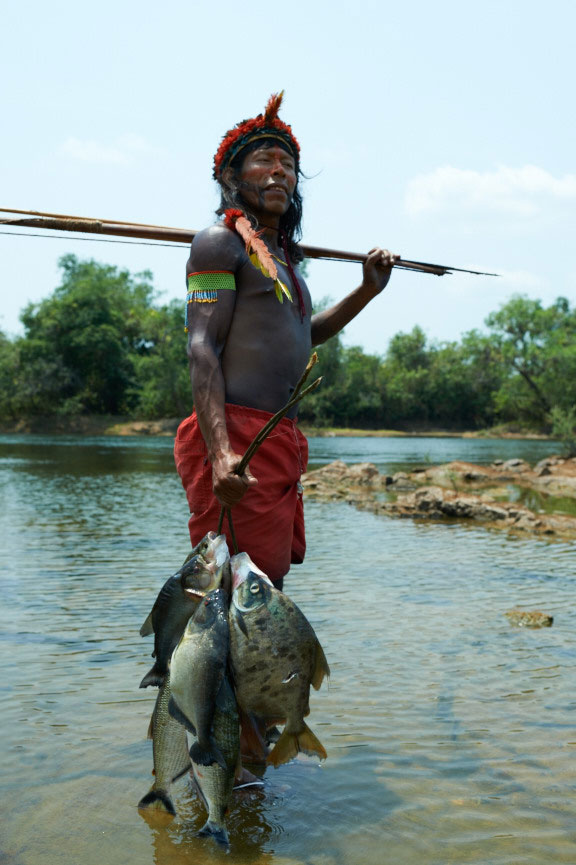
Photo: Martin Schoeller
Conservation and Indigenous Peoples: The Kayapo

Photo: Simone Giovine
“We want to tell the kubẽ (white men) to listen, to respect our rivers, our forests, our land for where there is goldmining it is worse for us because we can get sick. The relatives who live where there is gold mining are already sick. There is a lot of mercury contamination in fish. That’s why I don’t want goldmining in my village” – Oro Muturua, Mojkarakô village
There is widespread recognition of the importance of Indigenous peoples for protecting forests, biodiversity, and carbon sequestration.The Kayapo people of the Brazilian Amazon exemplify how Indigenous peoples, when empowered and supported, can serve as effective guardians of vast territories, protecting not only their cultures and livelihoods but also preserving high biodiversity ecosystems.
The Kayapo are one of the world’s most successful forest conservation stories. In the early 2000’s the Kayapo indigenous people living on over nine million hectares (23 million acres) of their ratified indigenous territory chose to ally with the conservation movement and gain capacity for continuing to protect their vast territory in the highly threatened and lawless southeastern Amazon. The mission of the alliance, known as the “Kayapo Project,” is to ensure Kayapo cultural, economic, political, and territorial autonomy. The Kayapo are unconquered and the alliance strives to keep it that way.

The Kakakuben guard post on the Pitxaxa river, western TI Menkragnoti
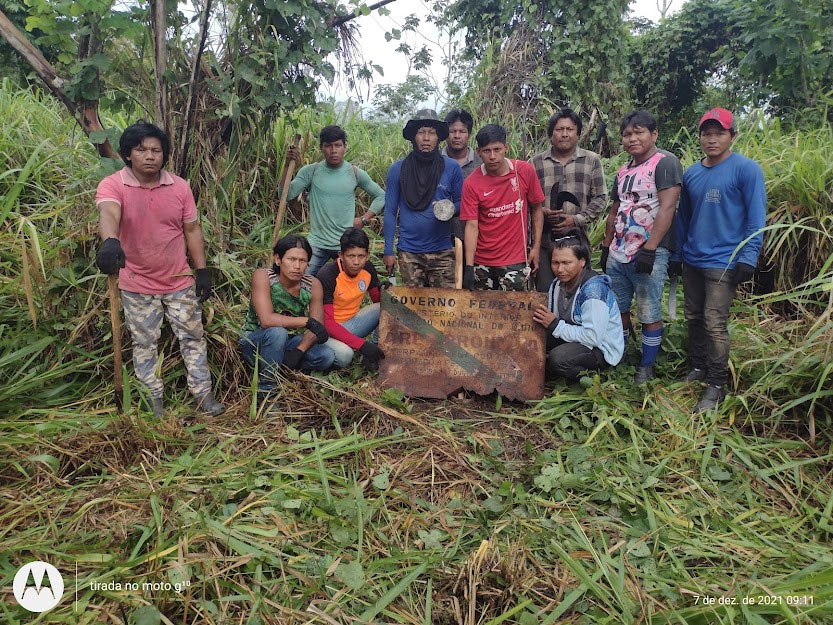
The Kayapo Project is led by three local Kayapo NGOs, the Protected Forest Association, Kabu Institute, and Raoni Institute , representing respectively the northeastern, northwestern, and southwestern Kayapo communities. Kayapo NGOs work in partnership with the International Conservation Fund of Canada (ICFC), Re:Wild, Environmental Defense Fund (EDF), Conservation International (CI) and others for investment to empower territorial control and sustainable management. Kayapo Project strategy relies on four main lines of action:
- Institutional Strengthening and Capacity Building of three Kayapo NGOs
- Territorial Monitoring and Control (Surveillance)
- Development of Equal Opportunity
- Sustainable Economic Enterprises
- Political Action and Legal Support
“We Kayapó preserve the forest that we live in. We need to feed ourselves, we need to hunt, fish and that’s how we live. We cannot destroy our forest” Kajkware Kayapó, Mojkarakô village
